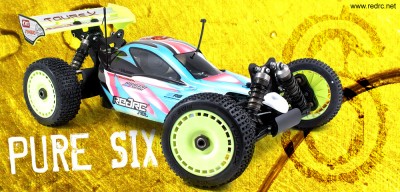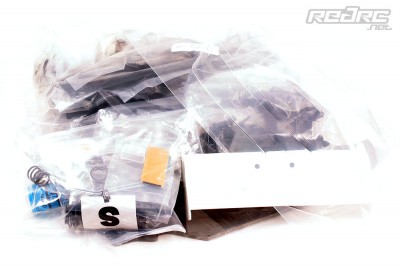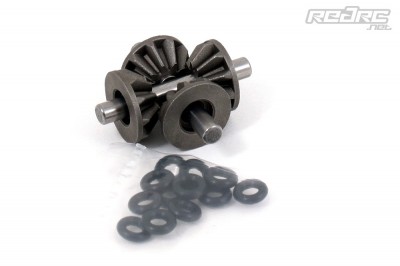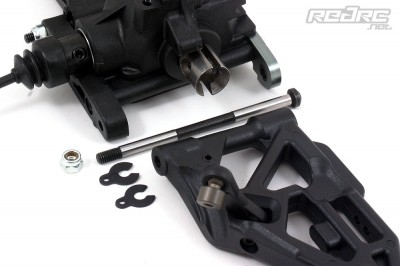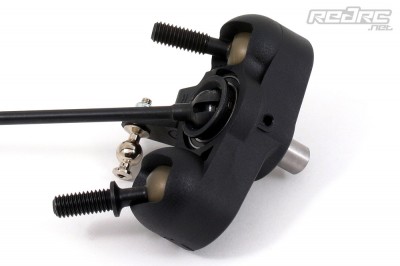Pure Six – Mugen MBX-6
The Mugen name is a synonym for high performance nitro racing buggies for nearly two decades now. Becoming 1990 World Champion in the hands of Mugen’s Kohji Sanada, the Super Sport started the long line of winning buggies with the like of the aforementioned Super Sport, the Athlete and nowadays the MBX range of cars starting from the MBX-4 that hit the market at the end of the 1990’s to the all-new MBX-6!
The packaging is a piece of art with an all black cardboard box with only a CAD drawing of the MBX-6 and some technical data on it. Inside you find a nice piece of kit packed in various bags. The only downside we found was the pre-1990 standard kit manual. We understand that the Mugen is a competition kit designed for full-breed racers and not the beginner but we like well made manuals and we are sorry to say that the Mugen manual lacked a bit of information here and there.
As with nearly every competition kit no wheels or tyres are supplied so we opted to go for the new Tourex range of tyres. Engine-wise RMV Deutschland, the new Mugen distributor for Germany and Benelux, supplied us with an RB Concept Sportline S5 L2G ‘motorbox’ including an EFRA 2045 pipe.
Front
Compared to its predecessor (MBX-5) the MBX-6 received makeovers in nearly all departments. Refinements are made to the gear differentials which now sport lightened crown gears but are otherwise unchanged from the MBX-5 range. The action of the internal spider gears can be controlled by optional O-rings and additionally through the use of different fluids. 7000cps oil is supplied as a standard for the front differential.
The differential rotates in a new diff casing on which the new lower suspension mounts are screws on. These mounts are changed as well. The one up front is made out of grey anodized alloy with two different plastic inserts to change the Kick-up of the wishbones. The rear piece is made out of plastic and is supplied with two optional Kick-up positions. The wishbones are located with the help of sturdy suspension shafts known from the MBX-5 range that do away with those nasty E-clips thanks to M4 nut at the end. These nuts also help to adjust the axial play of the wishbone if needed. But do not over tighten them otherwise the suspension starts to bind.
Coming to the upper department of the front suspension you can find the updated upper wishbones, that at first look like parts from the MBX-5 but are re-shaped to make way for the larger diameter big-bore shocks. The upper carbon brace is again of a different design than before and locates the upper suspension mount. Again different inserts (three this time) come into play here to adjust the roll-centre.
In front of the upper wishbones the most obvious new item of the MBX-6 can be seen: the 4 millimetre carbon shock towers. They not only do away with the machined alloy ones found on the old MBX but also offer a more laydown shock position that is associated with the new breed of nitro offroad buggies.
The steering set-up once again shows a pivot-ball ensemble that is the same for many years now, doing away with the conventional C-hub suspension many of the other manufacturers use. The steering blocks are updated items that sport a carbon plate to fit the connecting ball to the steering links with. The older MBX-5 had a one piece plastic part here. Reason for the new design could be that changes to the steering set-up/geometry are easier to do in the future with new carbon plates instead of a whole new plastic steering block.
The CVA-type universals of the MBX-6 are equipped with lightened wheel axles that sport multiple holes for the joint pin. These holes not only save weight, you can also use them as spare holes when the used ones start to show signs of wear. The steering is a ball raced double bellcrank set-up with a sturdy 5 millimetre Ackermann plate that offers three different mounting holes for the inner steering link.
